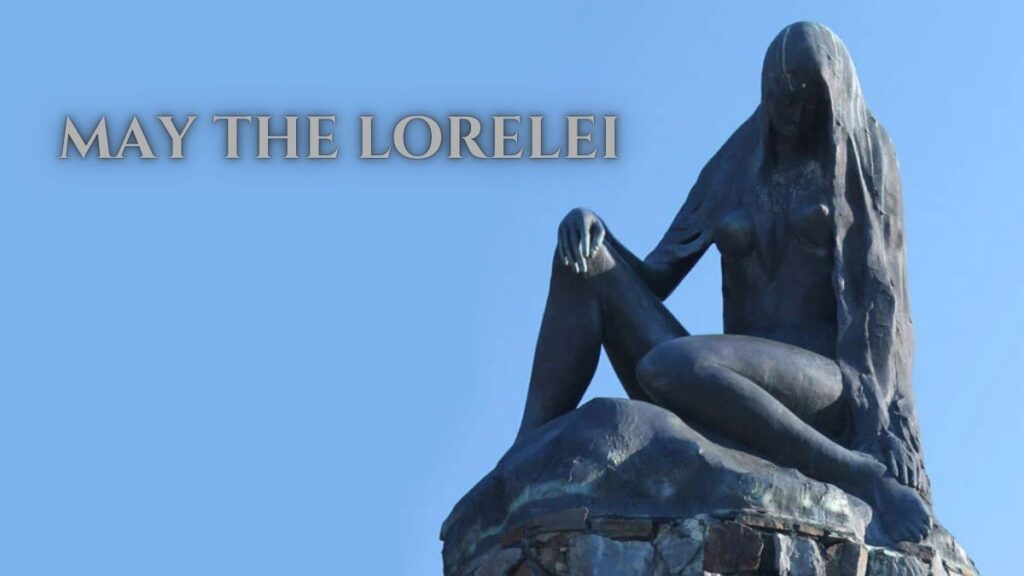The story of the Lorelei, a figure woven into the fabric of German folklore, has captivated people for centuries. With its origins dating back to the Rhine River’s legendary tales, the phrase “May the Lorelei” has been embraced by many as a symbolic reference to beauty, mystery, and danger. But what exactly does the phrase “May the Lorelei” represent, and why does it continue to intrigue both those familiar and unfamiliar with the myth?
In this article, we will explore the meaning behind “May the Lorelei,” delving into the mythological roots of the character, its significance in modern culture, and the lasting influence of the Lorelei myth. Furthermore, we’ll analyze the relevance of this captivating folklore within the context of today’s global narrative.
Understanding the Lorelei Myth: A Brief Overview
The figure of Lorelei is rooted in Germanic legend, specifically tied to the Rhine River, one of Europe’s most storied waterways. According to the myth, Lorelei was a beautiful maiden who sat atop a rocky outcrop above the Rhine, singing hauntingly beautiful songs. Her mesmerizing voice would lure sailors to their doom, causing them to crash upon the rocks below.
The exact origin of the Lorelei legend is somewhat unclear, with different versions of the story appearing throughout history. However, the most popular interpretation comes from the poem Die Lorelei by German poet Heinrich Heine, written in 1824. In this poem, Lorelei is depicted as a tragic figure who, despite her beauty, is responsible for the demise of sailors.
Lorelei in Popular Culture: “May the Lorelei” as a Symbol
In modern times, the phrase “May the Lorelei” has evolved into more than just a reference to a mythological figure. It has taken on a broader symbolic meaning, signifying an irresistible allure or an enchanting yet dangerous force. It is often used metaphorically in music, literature, and even pop culture, evoking the idea of a captivating figure whose influence can be both enchanting and perilous.
The use of the phrase in modern contexts reflects the dual nature of the Lorelei myth. She represents the allure of beauty and music, while also symbolizing the danger of falling victim to temptation or false promises. In this sense, “May the Lorelei” can be interpreted as a wish or invocation to embrace the enchantment of life but also to remain cautious of the potential pitfalls that lie ahead.
The Lorelei and the Rhine River: A Geographic Connection
The Lorelei rock, a famous landmark along the Rhine River, stands as a testament to the myth’s enduring presence in the region. Located near the town of St. Goarshausen in Germany, the rock rises about 132 meters above the river, creating a narrow, treacherous stretch of water that has long been notorious for shipwrecks.
For centuries, the Lorelei rock has been a focal point for both tourists and mythology enthusiasts. It is said that the treacherous waters below the rock were once the site of many shipwrecks, a fact that helped cement the association of the rock with the Lorelei legend. Today, visitors can take boat tours along the Rhine, marvel at the picturesque views, and hear stories of the mythical maiden that once sang from the rock.
The Lorelei’s Cultural Impact: Literature, Music, and Art
The Lorelei myth has inspired countless works of art, literature, and music. The most notable of these is Heinrich Heine’s aforementioned poem Die Lorelei, which has been set to music by numerous composers, including Franz Liszt. This composition has helped solidify the connection between the Lorelei figure and the broader romantic themes of unattainable beauty, melancholy, and tragedy.
In addition to poetry and music, the Lorelei has also been a subject of visual art. Throughout history, artists have depicted her as a symbol of the femme fatale—an enchanting woman whose beauty and charm can be both captivating and dangerous. These representations have varied, from traditional, romantic portrayals to more modern, abstract interpretations.
Moreover, the Lorelei’s influence extends beyond German-speaking countries, having inspired stories and adaptations in different cultures. The themes of temptation, danger, and loss resonate universally, making the myth of the Lorelei relevant in contemporary society.
“May the Lorelei” in Modern Usage: A Phrase of Mystique and Mystery
In today’s world, the phrase “May the Lorelei” has found a place in everyday language. Whether it’s used in literature, music, or even casual conversation, it’s a phrase that conveys both a sense of mystery and a cautionary tone. People might invoke “May the Lorelei” when describing an experience or person that seems too good to be true, warning of the potential consequences of becoming too entranced by something or someone.
For instance, in modern relationships or career pursuits, “May the Lorelei” might symbolize the danger of falling for a false allure or being distracted by superficial charm. It serves as a reminder to look beyond surface appearances and consider the potential risks that may arise from a singular focus on what seems enchanting.
The Global Impact of Lorelei: Myth, Tourism, and Economy
In the modern age, the Lorelei myth has also contributed to regional tourism, particularly in Germany. The Lorelei Rock attracts thousands of visitors each year, from history buffs to curious tourists hoping to catch a glimpse of the place where the myth is said to have originated. The surrounding Rhine Valley is a UNESCO World Heritage site, known for its vineyards, castles, and picturesque landscapes, making it a prime destination for travelers.
The tourism industry benefits greatly from the Lorelei myth’s cultural significance, with guided tours, river cruises, and local events focusing on the legend and the famous rock. Whether it’s through literature or the physical landmark itself, the Lorelei continues to play an important role in Germany’s economy by drawing attention to the cultural heritage of the Rhine region.
Comparison Chart: The Lorelei Legend in Different Cultures
| Aspect | German Mythology | Modern Interpretations | Tourism and Economic Impact |
| Origin | Germanic folklore, with strong ties to the Rhine River. | Widely recognized across the globe, especially in Europe and North America. | The Lorelei rock in Germany attracts tourism. |
| Key Symbolism | Beauty, danger, tragic fate. | Allure, danger, cautionary tale. | Cultural heritage, historical significance. |
| Cultural Influence | German literature, music, and art. | Modern films, literature, and metaphorical usage. | Tourism, local economy boost. |
| Notable Works | Die Lorelei by Heinrich Heine, music by Franz Liszt. | Various films, books, and songs across genres. | Lorelei rock, Rhine river cruises. |
| Message/Theme | The dual nature of beauty and danger. | The seduction of allure, with an underlying warning. | Preservation of mythological and cultural history. |
Conclusion: The Enduring Power of Lorelei’s Legacy
The phrase “May the Lorelei” continues to resonate across cultures and generations. From its deep roots in Germanic mythology to its modern use as a metaphor for beauty and danger, the myth of the Lorelei serves as a powerful reminder of the complexity of human nature. She is both an enchantress and a cautionary tale, a timeless symbol of how allure can be both captivating and perilous.
Whether you are a history enthusiast, a fan of folklore, or someone seeking inspiration from the mystique of ancient legends, the tale of the Lorelei offers profound lessons in navigating beauty, temptation, and risk. And as the legend lives on in literature, music, and tourism, it’s clear that “May the Lorelei” will continue to inspire, intrigue, and remind us of the powerful forces that shape our world.







